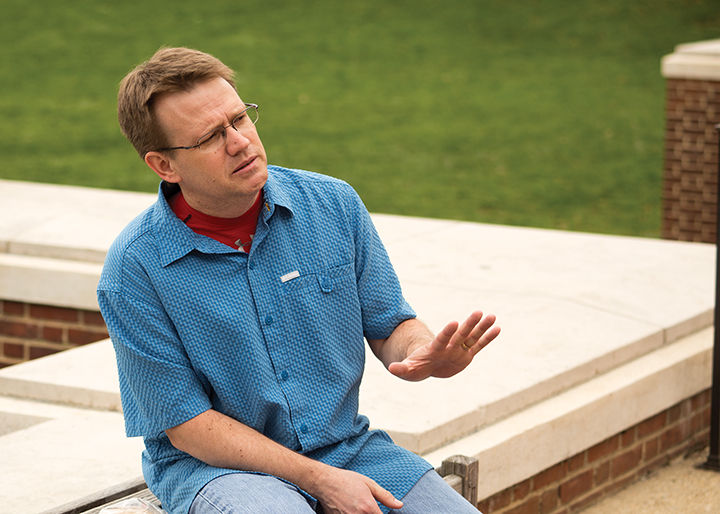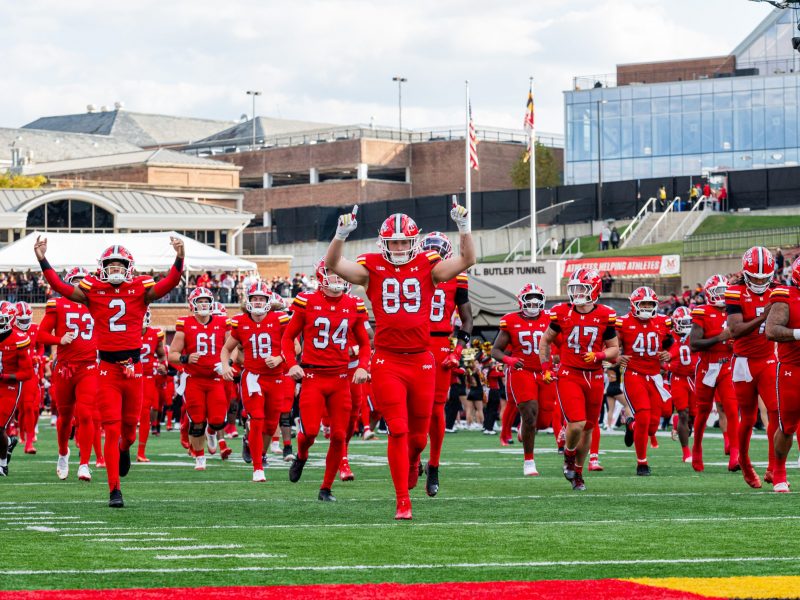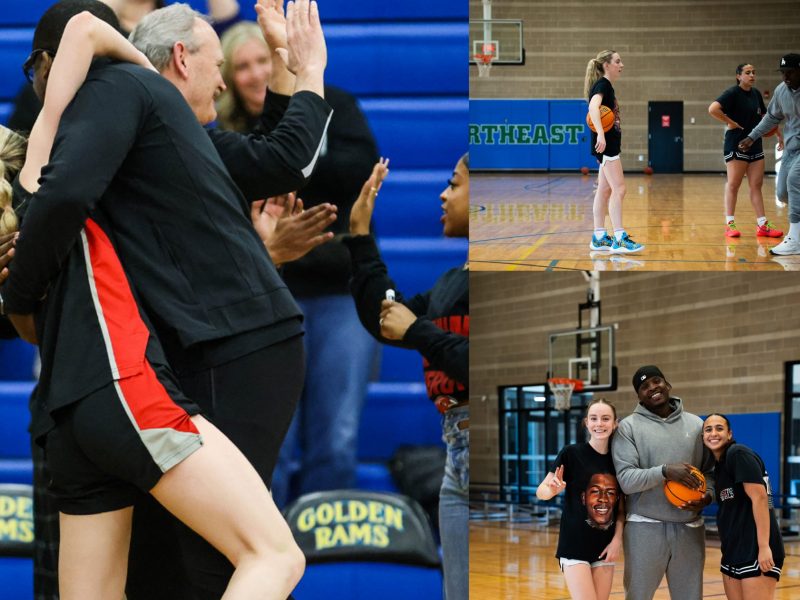The black Under Armour backpack Bill Dorland carries makes the director of the Honors College blend in with his students.
It’s the contents that set him apart.
While his students lug textbooks and laptops, Dorland’s bag holds medical supplies — the things he needs to deal with the effects of four surgeries, three clinical trials and more than a decade of living with chordoma, a skull and spinal cancer that effects one in a million every year and usually has a survival rate of seven to nine years.
“We’re all aware of his illness,” said sophomore government and politics major Irene Solaiman, “but I think part of what makes him such a strong and inspirational man is that it’s not affecting his life.”
Dorland first worked as a university physics professor and later as the Honors College director for the duration of his illness, including a stint in 2006 when he was receiving radiation treatment five days a week.
But last month, he announced he plans to step down as director June 30, and following a yearlong sabbatical with his wife, geology professor Sarah Penniston-Dorland, he’ll return as a physics professor at this university.
“What I’m interested in is leaving while you’re at the top, leaving while things are good,” said Dorland, 49. “You know, if any one person does any one thing for too long, it can get stale.”
Since he took over in 2009, the Honors College has added four living-learning programs, doubled its budget per student and raised all adjunct salaries by between 25 and 50 percent, making it possible to attract the same high-level faculty as nearby Georgetown University, George Washington University and American University, Dorland said.
It’s all part of Dorland’s mission to raise the academic profile of the Honors College and make it competitive with the Ivy Leagues.
“I credit him with the reason I came to this school,” said Solaiman, who was also considering Princeton University and Georgetown. “I found him so inspiring, and I thought that, if this is the kind of faculty Maryland has, this is the school I want to be at.”
Last year, the program produced this university’s first Rhodes Scholar — senior computer science and physiology and neurobiology major Fang Cao — since 1974, when Tom McMillen, former NBA player and U.S. representative, won the award. Dorland said it was a mark that the program was back.
“He’s been very important in providing leadership,” said Donna Hamilton, undergraduate studies dean and academic affairs associate provost. “He represents the highest of academic standards, and it’s wonderful for students in the Honors College to have him as a role model.”
And while Dorland has done much to improve the program, he said the program has had an equally positive impact on him.
“I really love the people I work with. This is the most upbeat, interesting group of instructors and staff. The most, of course, is the students,” Dorland said. “I like being around students because they’re really alive, and that’s good through all of this.”
‘YOU NEED A PURPOSE’
Dorland’s family is from Texas. His wife’s is from Minnesota. Holiday season used to mean packing up their car and bringing their daughter Kendall, now 18, for a cross-country road trip to celebrate with both sides.
The two weeks of driving wasn’t an issue for Dorland until the early 2000s, when sitting for that long suddenly gave him excruciating back pain.
It was one of several seemingly unrelated symptoms — failed systems in his pelvic region and sharp, shooting pains that came ostensibly out of nowhere — that mystified doctors until 2004.
“I was going to all these different doctors for a variety of weird ailments that seemed like they had nothing to do with each other,” Dorland said. “What it was, was that the nerves going to all those different regions were passing through a tumor that was eating away at them.”
The tumor on the base of his spine was the size and shape of a soda koozie. Seven surgeons spent 12 hours removing four vertebrae and his tailbone.
It took him just a few days to regain the ability to walk, despite doctors telling him he’d need a month of rehab.
He was back at this university just six weeks later but had changed his focus. Instead of concentrating on physics research, as he had done at this university since 2001, he wanted to teach.
“You need a purpose. You need a reason to get up in the morning,” Dorland said. “When I’m feeling bad — this is what my mom taught me — I should help someone else. My way of dealing with all of this has been to dig in and try and do things for others.”
In July 2005, the university offered him tenure — and doctors told him they found three new tumors.
That up-and-down pattern kept up during the next four years. He was named Honors College director and was set to start on Jan. 1, 2009, but on Dec. 24, 2008, doctors found yet another golf-ball-size tumor.
“It is funny that I should be learning to live with so much explicit uncertainty, when a good deal of what I am known for professionally consists of quantifying uncertainty,” he wrote on his blog on Aug. 19, 2005. “I’m sure there’s a good joke in here somewhere…”
By the next December, things were looking up again. A student walked into Dorland’s class with a message that “the secretary” was on the phone asking to speak to him.
“Tell him or her that I’ll call back later,” Dorland recalls saying before turning back to his class.
Turns out “the secretary” was the Secretary of Energy, who was calling to congratulate Dorland on winning the prestigious 2009 E. O. Lawrence Award for his physics research.
He spent $4,000 of his $50,000 prize money on a fancy dinner celebration with family and friends. The rest went to paying back medical bills.
TRIALS AND TRIBULATIONS
From 2010 to 2011, Dorland only made five posts on his once frequently updated medical blog. His MRIs were coming back clean. Life was normal — good, even. Dorland decided to attempt “the impossible task” of teaching, and grading the papers of, all 680 incoming freshmen in HONR100: Honors Colloquium.
Then in 2012, there was another recurrence of the cancer — this one different from those in the past.
No treatments he’d previously had were deemed possible: Because of the tumor’s position near the spine, surgery was not an option, and it was located in an area that had already received the maximum amount of radiation doctors were willing to try.
“Doctors at MD Anderson, Mass General and Johns Hopkins said, ‘There’s nothing more we can do. You have tumors; they’re going to grow and then you’ll die,’” Dorland said.
“For a family who has been fighting something for so long and then to be told there’s no other way to fight, that’s bad news,” Penniston-Dorland said.
So the family sought clinical trials — first, a drug trial at Johns Hopkins involving the injection of bacterial spores into Dorland’s bloodstream in the hope they would destroy the tumors.
When that failed, the family looked into high-dose radiation offered at Memorial Sloan Kettering Cancer Center in New York. But organs can’t survive such an intense level of radiation, so doctors shifted Dorland’s neighboring organs out of the way to protect them while they delivered high doses of radiation to the site of the cancer.
And when that failed, they looked into immune therapy offered at the National Institutes of Health.
Suddenly, his tumors began to shrink.
“No one else in the trial had the same response,” Dorland said. “It turns out the second trial and the third trial were interacting. They say I’m OK now. The theory is that if the tumors want to come back, my immune system will stop them now.”
Using Dorland’s experience, NIH opened a separate phase-two trial in April to test the results of radiation alone versus the combination of radiation and the immune therapy vaccine.
“The historical relevance will really depend on how this upcoming study goes,” said
Dr. Christopher Heery, director of the Clinical Trials Group of the Laboratory of Tumor Immunology and Biology at the National Cancer Institute. “If it turns out that this vaccine really does have the effect of shrinking chordomas, I think his case will be one we look back on as the driving force behind that.”
For Dorland, one of the best parts of the trial — besides the additional years with his family it afforded him — is that it stemmed from research sponsored by the Chordoma Foundation, which Dorland helped launch with other patients in 2007.
“We’re participating in our own cure,” he said. “It’s extremely rewarding.”
But Dorland’s aggressive treatment approach is not without consequences. The second trial, where his spine was “blasted” with radiation, left him with neuropathy.
He now walks with a cane and can’t feel anything in his left foot, a fact he demonstrated by using the cane to whack at his leg.
“I traded mobility for life,” Dorland said. “I’ve traded a lethal problem for a problem that millions of people have.”
That’s the kind of glass-half-full outlook Penniston-Dorland said her husband has shown throughout his illness.
It’s the kind of outlook that students in the Honors College said they appreciate and will miss.
Junior Nathan Ng, an economics, mathematics and physics major, said he felt lost when he first came to this university. He said he lacked direction and at times questioned if physics was the right path for him. So he decided to ask for help from the friendly, approachable Honors College director.
He began working with Dorland on a research project, and his worries were assuaged. He said he now knows what direction he wants to pursue.
“Basically,” Ng said. “I want to follow in his footsteps.”
William Dorland talks to a reporter about his decision to step down from his position as the Director of the Honors college.
William Dorland poses next to the Testudo statue in front of McKeldin Library.




